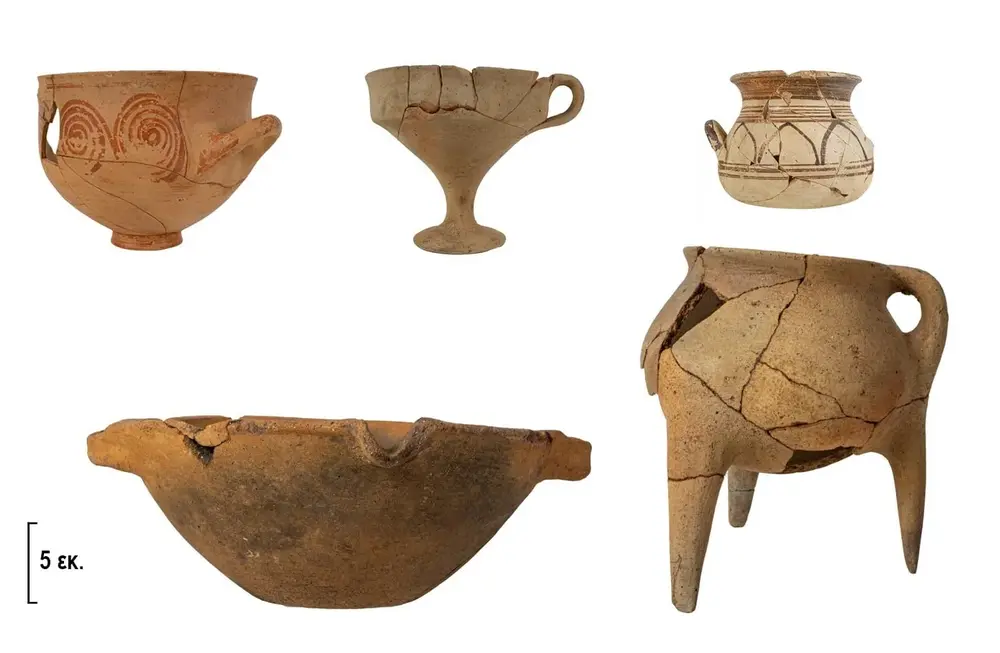Excavations at the sanctuary of Zeus on a Greek island revealed that it was used as a shelter during a Bronze Age disaster. The island of Aegina is located in the Saronic Gulf in the eastern part of Greece, between the Attica and Peloponnese peninsulas. For a long time, the temple of Aphaia, built around 500 BC, was considered the main attraction. Greek archaeologists have discovered that the history of Aegina is very interesting, long before classical Greece.
The joint Greek-Swiss archaeological expedition has been excavating Mount Ellanion, the highest mountain in Aegina, since 2021. Today, the Church of the Assumption stands there overlooking the Saronic Gulf. Not far away, on the northern slope of the mountain, in ancient times there was the sanctuary of Zeus, the main buildings of which were previously discovered by German archaeologists.
New excavations revealed that the sanctuary was much older than previously thought and was built no later than the mid-2nd millennium BC. The latter turned out to be connected by a general defense system to the top of the mountain and to the place where the Christian temple is now located. The Greek Ministry of Culture announced this in a press release.
We know from ancient Greek sources, such as the works of Pausanias, that Zeus was worshiped in Elanion. He also stated that the temple was built on an older foundation. Archaeologists planned to record and date the remains of prehistoric structures and objects to understand how long ago people used the area.
It is known that the people of Aegin lived quite comfortably until the beginning of the 2nd millennium BC. The source of this prosperity was navigation; Aegina was part of the first union of maritime states. It can be said that the inhabitants used two development strategies simultaneously: Minoan (peaceful trade) and Mycenaean (conquest and robbery).
But neither strategy helped the population of Aegina survive the Dorian invasion and the Bronze Age disaster. Previously, scientists believed that the prosperous settlements of the island were emptied because of them around 1200 BC and remained so until the archaic period of Greece. But it turns out everything wasn’t quite like that.
Next to the Christian temple, archaeologists excavated a Mycenaean building measuring approximately four and a half by three meters, bounded by walls on three sides and rock on the fourth. Approximately 30 containers (cooking pots, storage jars, etc.) were found inside; These vessels were preserved because the collapsed walls were covered with large stones.
The oldest ships date back to the period of the so-called destruction of the Mycenaean palaces (1250-1200 BC). Researchers discovered the remains of a defensive wall around the building. Another wall built later connects the Mycenaean building to the temple of Zeus on the northern slope of the mountain.
Researchers have hypothesized that Aegina was not evacuated during the Dorian invasion. Part of the island’s population went to the mountains, and there, on the highest peak, people built a shelter. Perhaps Ellanion was chosen for these purposes as a sacred place where prayers to the gods were made. But his height likely played a role.
Archaeologists, who increased the excavation area, found objects near the shelter dating back to the Roman period. To the north of the Christian temple, they found an altar with thousands of small pieces of burnt animal bones.
Although the population of Aegina certainly decreased significantly during the Bronze Age cataclysm, it is likely that people never completely abandoned the rock shelter and temple of Zeus. However, by the archaic period their numbers were increasing rapidly. The inhabitants of the island went about their usual business, such as seafaring and warfare.
Aegina was in a state of almost constant war with Athens. However, during the Persian wars, their conflict was put aside: the inhabitants of the island fought on the side of Athens and participated in the battles of Salamis, Plataea and Mikala.













